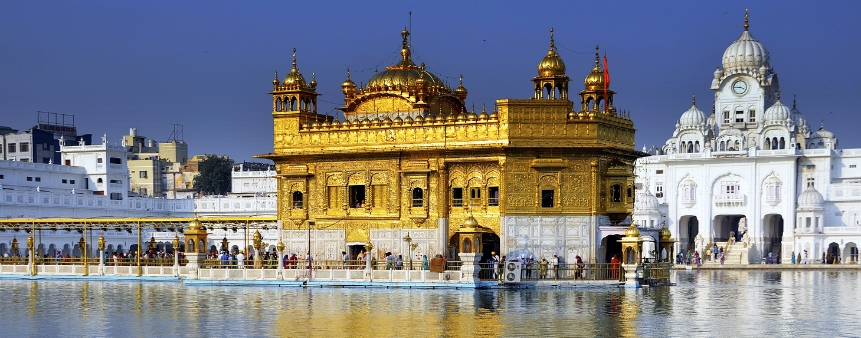Talk to India's best Astrologers
First Consultation at ₹1 only
Login
Enter your mobile number
Situated in the Hingoli district of Maharashtra, the Aundha Nagnath Temple is one of the twelve Jyotirlinga temples. As Jyotirlinga is a representation of Lord Shiva, people of the region worship him and call him Lord Aundha Nagnath. Aundha Nagnath Maharashtra is of great importance and is the eighth Jyotirlinga, or 'Adya', of the deity. The deity is also called Nagnath or Nageshwar. It is a sacred site for the followers of Hinduism and Sikhism. They come here for peace, prosperity and protection against evil. After entering Maharashtra and looking for roadmaps, you will find the Aundha Nagnath temple location at a distance of 30 km from Hingoli, 50 km from Parbhani and approximately 64 km away from Nanded. Visitors can opt for any of these routes according to their time and convenience.
Let us know some interesting facts about the Aundha Nagnath Mandir ahead.
Honda Nagnath mandir, or Aundha Nagnath Temple, was well-established in the 13th century by the Yadavas of Devagiri. Still, its origin is believed to be present in the era of the Pandavas, i.e. 3229 BCE. Ancient books have mentions of Lord Yudhisthira, who built this supernatural structure during his exile of 12 years with the other four Pandavas and their wife, Draupadi.
A lot of invaders tried to destroy the temple, especially King Aurangzeb, during his Mughal reign. But it is written in associated storybooks that no one could totally cause destruction to the temple. It is said that a large group of bees attacked the Mughal king and his men, who finally lost hope and failed in their attempt. However, the damages affected the structure of the Jyotirlinga, which was later fixed by Rani Ahalyabai Holkar, Queen of the Maratha Malwa Kingdom. Rani Ahalyabai rebuilt and renovated a lot of destroyed temples. Therefore, her statue in white has been made outside the temple in her name and glory.
During the exile or Vanvasa of 12 years, Pandavas made their hermitage or hut in the forest of the Hingoli district. Their cows used to drink water from the nearby river and offered milk to it in return. One day, Lord Bhima noticed this and informed his eldest brother, Yudhishthira. The Pandavas realised the presence of God in the river. Hence, they started digging and removing water from the river. After a certain depth, the water was boiling hot. Lord Bhima hit the river thrice with his weapon. A stream of blood started seeping out of it, and a Linga appeared. Lord Yudhishthira created a temple around it and established the Jyotirlinga.
The Aundha region was called Darukvane thousands of years ago. It was named after the demon - Daruka. Also, the forest where the region was located was known as “Daruka Van” or Daruka Forest. The area was densely populated with trees, and a lot of snakes lived there.
Daruka was a great devotee of Lord Shiva but used to trouble the people who lived around the region. It was because of his true nature of being an Asura or demon. Supriya, a strong devotee of Lord Shiva and Goddess Parvati and one of the imprisoned monks, got fed up and distressed by the chaos created by Daruka. She approaches Shiva and Parvati for help by chanting mantras associated with them loudly. The deities appeared and smashed all the demons present in the region. Later, Daruka requested forgiveness and asked them to stay back in the region as a forever warning sign. Lord Shiva agreed and stayed back as Jyotirlinga and Parvati as Nageshwari beside him.

Saint Namdev was a great poet. Once, he travelled long in search of a Guru. He reached Aundha Nagnath and finally met his Guru, Visoba Khechar. His Bhajan and Kirtana disturbed the prayers and rituals of the pandits present there. So, he shifted to the backside of the temple. It is believed that Lord Shiva was impressed by his melodious voice, and the whole temple was moved towards him.
Since then, in his memory, the temple remained as it is, but the cow Nandi remained at the backside. It is an interesting fact as the Nandi statue always remains in front of the Jyotirlinga to draw people’s attention towards God.
Saint Namdev's name has been mentioned in the great book of Sikhism, Guru Granth Sahib. And that is why the Sikhs, too, visit the Aundha Nagnath Jyotirlinga Maharashtra.
The temple is made in dry brick stone style. The present structure is in the form of an enclosure to protect it from attackers. The Jyotirlinga or Aundha Nagnath Shivling is in the basement, and the visitors have to travel down to worship the deity. The basement is called Sanctum Sanctorum.
The entrance of the temple is called Ardha Mandapa or Mukha Mandapa, which is a half hall. It takes us to the main hall. The eight pillars and outer walls are decorated with beautiful sculptures. Elephant sculptures on the entry gate always catch attention. The main hall has three such entrances. Behind the temple is the sacred river where the Pandavas found the Linga.
Runomochan Tirtha, one of the shrines in the Aundha temple complex, is also of great significance. Once every 12 years, the water of Kashi Ganga is offered here, which turns into crystals as it combines with the saltwater present there.
Following are the major festivals that are celebrated in Aundha Nagnath Temple with great enthusiasm.
The temple timings exist between 4 am to 9 pm for all the days of the week. It is best to visit this temple in winter if you want to enjoy the scenic beauty of the place along with worshipping the deity.
The following are the specific Pooja timings:
Below are the three sources of transport to reach Aundha Nagnath Temple.